Arissa Wongpanich
Regression Language Models for Code
Sep 30, 2025Abstract:We study code-to-metric regression: predicting numeric outcomes of code executions, a challenging task due to the open-ended nature of programming languages. While prior methods have resorted to heavy and domain-specific feature engineering, we show that a single unified Regression Language Model (RLM) can simultaneously predict directly from text, (i) the memory footprint of code across multiple high-level languages such as Python and C++, (ii) the latency of Triton GPU kernels, and (iii) the accuracy and speed of trained neural networks represented in ONNX. In particular, a relatively small 300M parameter RLM initialized from T5Gemma, obtains > 0.9 Spearman-rank on competitive programming submissions from APPS, and a single unified model achieves > 0.5 average Spearman-rank across 17 separate languages from CodeNet. Furthermore, the RLM can obtain the highest average Kendall-Tau of 0.46 on five classic NAS design spaces previously dominated by graph neural networks, and simultaneously predict architecture latencies on numerous hardware platforms.
Machine Learning Fleet Efficiency: Analyzing and Optimizing Large-Scale Google TPU Systems with ML Productivity Goodput
Feb 10, 2025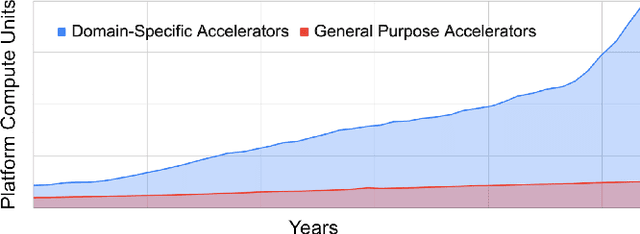

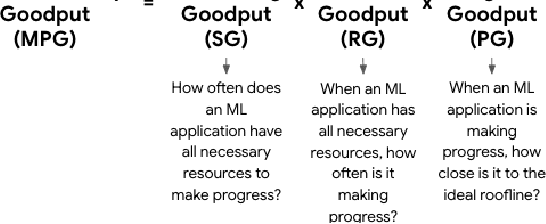

Abstract:Recent years have seen the emergence of machine learning (ML) workloads deployed in warehouse-scale computing (WSC) settings, also known as ML fleets. As the computational demands placed on ML fleets have increased due to the rise of large models and growing demand for ML applications, it has become increasingly critical to measure and improve the efficiency of such systems. However, there is not yet an established methodology to characterize ML fleet performance and identify potential performance optimizations accordingly. This paper presents a large-scale analysis of an ML fleet based on Google's TPUs, introducing a framework to capture fleet-wide efficiency, systematically evaluate performance characteristics, and identify optimization strategies for the fleet. We begin by defining an ML fleet, outlining its components, and analyzing an example Google ML fleet in production comprising thousands of accelerators running diverse workloads. Our study reveals several critical insights: first, ML fleets extend beyond the hardware layer, with model, data, framework, compiler, and scheduling layers significantly impacting performance; second, the heterogeneous nature of ML fleets poses challenges in characterizing individual workload performance; and third, traditional utilization-based metrics prove insufficient for ML fleet characterization. To address these challenges, we present the "ML Productivity Goodput" (MPG) metric to measure ML fleet efficiency. We show how to leverage this metric to characterize the fleet across the ML system stack. We also present methods to identify and optimize performance bottlenecks using MPG, providing strategies for managing warehouse-scale ML systems in general. Lastly, we demonstrate quantitative evaluations from applying these methods to a real ML fleet for internal-facing Google TPU workloads, where we observed tangible improvements.
Training EfficientNets at Supercomputer Scale: 83% ImageNet Top-1 Accuracy in One Hour
Nov 05, 2020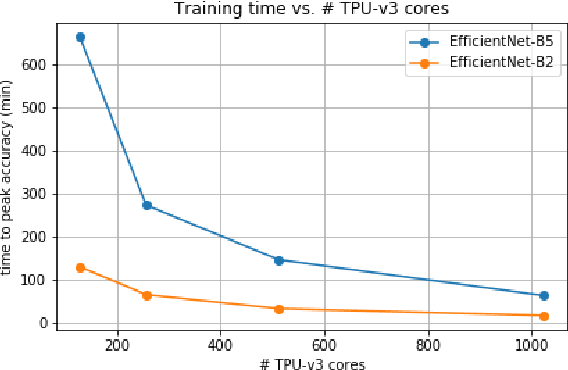
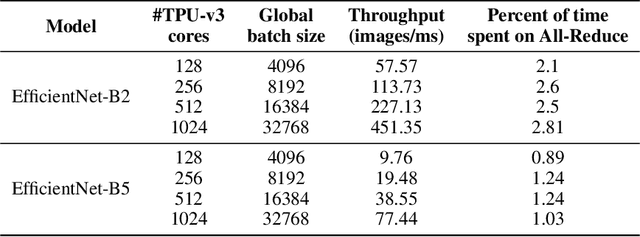
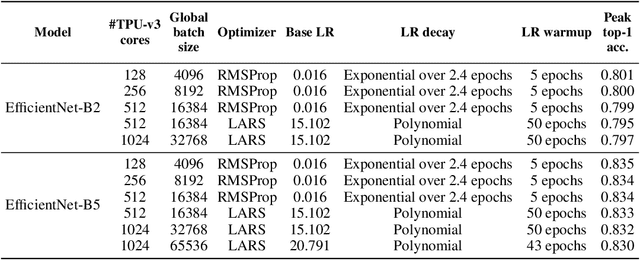
Abstract:EfficientNets are a family of state-of-the-art image classification models based on efficiently scaled convolutional neural networks. Currently, EfficientNets can take on the order of days to train; for example, training an EfficientNet-B0 model takes 23 hours on a Cloud TPU v2-8 node. In this paper, we explore techniques to scale up the training of EfficientNets on TPU-v3 Pods with 2048 cores, motivated by speedups that can be achieved when training at such scales. We discuss optimizations required to scale training to a batch size of 65536 on 1024 TPU-v3 cores, such as selecting large batch optimizers and learning rate schedules as well as utilizing distributed evaluation and batch normalization techniques. Additionally, we present timing and performance benchmarks for EfficientNet models trained on the ImageNet dataset in order to analyze the behavior of EfficientNets at scale. With our optimizations, we are able to train EfficientNet on ImageNet to an accuracy of 83% in 1 hour and 4 minutes.
 Add to Chrome
Add to Chrome Add to Firefox
Add to Firefox Add to Edge
Add to Edge